Aging Wisely
Aging Wisely
Strategies for Baby Boomers
and Seniors
Robert A. Levine, MD
ROWMAN & LITTLEFIELD
Lanham Boulder New York London
Published by Rowman & Littlefield
A wholly owned subsidiary of The Rowman & Littlefield Publishing Group, Inc.
4501 Forbes Boulevard, Suite 200, Lanham, Maryland 20706
www.rowman.com
16 Carlisle Street, London W1D 3BT, United Kingdom
Copyright 2014 by Rowman & Littlefield
Portions of this book were previously published in Aging with Attitude: Growing Older with Dignity and Vitality by Robert A. Levine (Westport, Conn.: Praeger, 2004). 2004 by Robert A. Levine.
All rights reserved. No part of this book may be reproduced in any form or by any electronic or mechanical means, including information storage and retrieval systems, without written permission from the publisher, except by a reviewer who may quote passages in a review.
British Library Cataloguing in Publication Information Available
Library of Congress Cataloging-in-Publication Data
Levine, Robert A.
Aging wisely : strategies for baby boomers and seniors / Robert A. Levine.
pages cm
Includes index.
ISBN 978-1-4422-3295-2 (cloth : alk. paper)ISBN 978-1-4422-3296-9 (electronic) 1. Older peopleHealth and hygiene. 2. Older peoplePsychology. 3. AgingPsychological aspects. 4. Quality of life. I. Title.
RA777.6.L49 2014
613'.0438dc23
2014003644
 TM The paper used in this publication meets the minimum requirements of American National Standard for Information Sciences Permanence of Paper for Printed Library Materials, ANSI/NISO Z39.48-1992.
TM The paper used in this publication meets the minimum requirements of American National Standard for Information Sciences Permanence of Paper for Printed Library Materials, ANSI/NISO Z39.48-1992.
Printed in the United States of America
I would like to dedicate Aging Wisely to my patients.
Over the years, thousands of patients have entrusted me with their care, teaching me about perseverance, humility, and tolerance as I have diagnosed their problems and treated them. I have learned the importance of listening carefully, for patients words usually provide the clues to their physical and emotional statespatients with terrible afflictions borne with dignity and hope, and others demanding and manipulative with minor problems. Some of the information in Aging Wisely has come from direct observation of my patients, while other data came from research related to patients I was seeing, or questions that they raised.
I would also like dedicate Aging Wisely to my wife, Anne, the source of many of my ideas and a gentle critic, who is always there, supportive and caring.
Chapter 1
Introduction
Be like the cliff against which the waves continually break; but it stands firm and tames the fury of the water around it.
Marcus Aurelius, Meditations
In 1994, at age fifty-five, I was diagnosed with non-Hodgkins lymphoma and told I had a 40 to 50 percent chance of surviving two years. Fortunately, the initial prognosis was wrong and after multiple courses of chemotherapy and a new experimental drug that is keeping my disease at bay, Im still here. Understandably, this experience has colored my perception of life, and living with the possibility of death has perhaps given me some insights in terms of what we regard as important and what should be important. My years of medical practice have also been helpful in shaping a philosophy of life and teaching me how we might approach the aging process. I have seen many individuals who have been healthy, chronically ill, or facing death, become either paralyzed with anxiety or cope effectively with their circumstances.
At seventy-four, society considers me old. My wife, at sixty-six, was one of the first Baby Boomers to reach the age of Social Security and Medicare. Yet, neither she nor I think of ourselves as old. We both exercise regularly and are in excellent physical condition. However, the way we must look to others was brought home to us recently on the subway in Manhattan. One morning, we pushed aboard a crowded subway car on the way to an appointment and were standing amid a throng of diverse people of all ages. Suddenly, to our surprise, a young woman arose from her seat and offered it to my wife. Initially reluctant, my wife sat down and nodded to the woman to thank her. Obviously, we see ourselves differently than how this woman and most other people see us. And thats true in general for midlifers and older individuals who may regard themselves differently than the way society perceives them. This is important to recognize as it impacts the manner in which we live and how people react to us, particularly when we are doing things that do not seem congruent with our ages.
Age is a question of mind over matter. If you dont mind, it doesnt matter.
The baseball player and armchair philosopher Satchel Paige uttered the above words many years ago, when he was pitching in the major leagues in his fifth and possibly sixth decades. He was dismissing those critics who insisted that he was too old to pitch at such a high level and showing confidence in his own abilities. Indeed, the way we age and much of what happens to our minds and bodies as we grow older depends on our attitudes and feelings about ourselves and our lives. Though some elements are beyond our control, such as illnesses or the death of loved ones, to find joy and contentment we must take advantage of what we can control while dealing with the adversities that might arise. We should also not focus on our mortality and how to live longer, since survival itself is meaningless. What is really important is the quality of our lives and whether we can find satisfaction in the things we do in the time available to us.
A large segment of Americas citizens, labeled the Baby Boomers, are now middle-aged or older, a major challenge for society and for these individuals. While the nation must come to grips with how to pay for the Medicare and Social Security programs for this group, the Boomers must learn how to skillfully handle aging to make their remaining years productive and pleasurable. And given the recent financial turmoil, many middle-aged Americans have lost their jobs or have seen their nest eggs depleted. This certainly complicates their planning for the years ahead, with some having to work longer and some unable to work at all despite their needs and desires. The Boomers are obviously not a homogeneous group, economically, healthwise, educationally, and in other ways that determine the manner in which they live. However, their attitudes and expectations will play a major role in whether they can age successfully. The ability to be happy and maximize their potential is theirs for the taking. But in order to grab the ring, people first have to get aboard lifes carousel, instead of standing on the sidelines because of inertia or fear. The goal of this book is to show people how to get aboard, enjoy the trip, and collect as many rings as possible. And for most of us, even the trip itself can be worthwhile.
As we face the problems that accompany aging and search for solutions, we are not alone. With life expectancy increasing and birth rates declining, the population of the United States and the rest of the industrialized world has aged significantly in the last half century and will continue to do so in the decades ahead. The roles and lifestyles of midlifers and seniors have also changed dramaticallythe result of both social necessity and individual desire. People who once would have been thought of as old and those of middle age today lead active, exciting livesas rich and rewarding as the younger members of society. Some keep working past the normal age of retirement, while others follow creative pursuits, engage in competitive or recreational sports, take courses, collect various objects, or travel extensively. Though these scenarios may be more prevalent among the affluent, they are seen at every economic level. The image of an older man and woman sitting on a porch in rocking chairs whiling away their remaining daysshe knitting and he perhaps reading the newspaperin a placid but boring existence, is no longer the general rule. The Rolling Stones (Mick Jagger was recently seventy and is about to become a great-grandfather) have sung to us for years about what a drag it is getting old. But it doesnt have to be that way. From the fifties up, people are demanding more from life and from themselves, and are discovering ways to satisfy these demands.
Next page
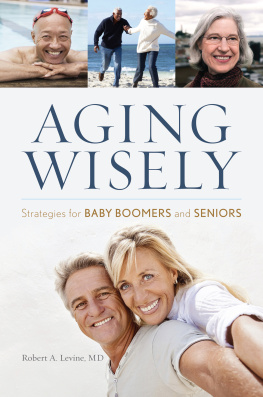
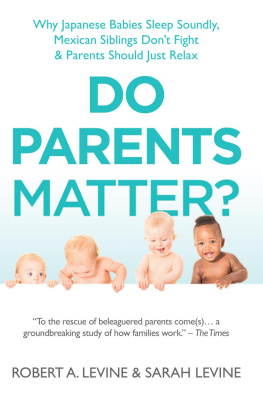


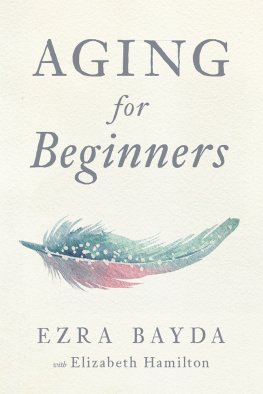
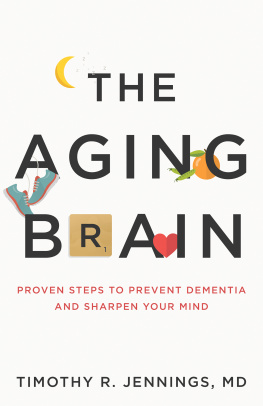
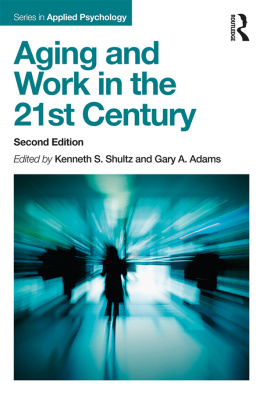
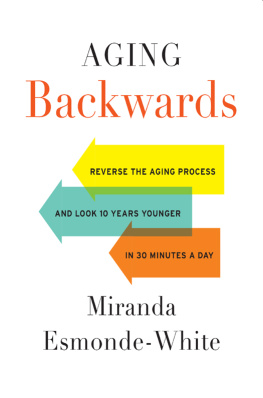
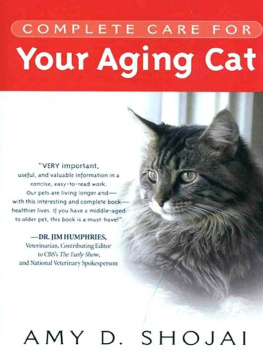
 TM The paper used in this publication meets the minimum requirements of American National Standard for Information Sciences Permanence of Paper for Printed Library Materials, ANSI/NISO Z39.48-1992.
TM The paper used in this publication meets the minimum requirements of American National Standard for Information Sciences Permanence of Paper for Printed Library Materials, ANSI/NISO Z39.48-1992.